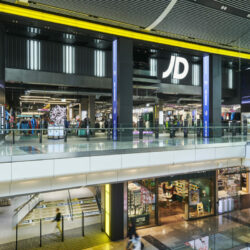The power of data to offer businesses a competitive advantage has been a hot topic across all industries for some time.
Retail is particularly open to this revolution because data usage is well-established in our industry, ranging back from the introduction of electronic point of sale (EPOS) technology – which allowed for SKU and category sales to be understood – through to the world of customer data. Moreover this latter revolution has enabled both insight and media investment activation to be data-led.
However, the fact that data‘s power to transform retail is well established doesn‘t mean that there aren‘t new opportunities that haven‘t been fully recognised, or that the full potential of data has been realised.
There are now numerous opportunities to understand everything about the retail environment and retailers‘ customers better than ever before – which means better and faster decisions based on more reliable data.
A great example of this is Clickstream data. Until very recently, it was almost impossible to reliably understand the consideration set a customer had in mind when choosing a product in category. Panel or algorithm-based solutions have been created to address this. However, today – in the world of eCommerce or multichannel retailing, the navigation path a customer used to make a purchase provides that data. If a customer looked at five televisions, before finally selecting one for purchase, a retailer can understand which televisions that customer considered potential substitutes for the one they bought.
And that is not all: knowing who the customer was allows us to understand more about that individual – whether they liked to read reviews (and how much they were influenced by these) or whether they liked to look at images. This data can then be used to personalise the experience online at a later stage.
Another example of where data can be used is in-store traffic: by using apps in store, retailers can understand where customers like to dwell and where they like to pass through. This enables both targeted offers to be delivered in-store (on a mobile device) and also for the store to be designed better to optimally serve the customer. Responsible retailers would make the collection of that data a fully opted- in choice for their customers. This has the added advantage of being able to join the data to a customer, again, further helping to cater better to them – do they like to race through the store, or spend time browsing, for instance.
In a completely different vein, radio frequency identification (RFID) data is already being used to track stock through the supply chain; however the ability to physically locate a precise item in a precise location offers significant opportunity to understand the appeal of this product. For instance, a fashion retailer could see which racks were driving the greatest number of dressing room tries and then, also, deduce which items were most likely to be rejected at the dressing room. This might help inform how the retailer handles different suppliers and feeds back into the production system.
One area where data can easily be garnered is the service centre: as colleagues engage customers to arrange a delivery, deal with a complaint or answer an enquiry, the voice data could be harnessed to generate sentiment analytics, such as whether customers are more likely to be happy or not with a certain product.
Over the next few years, extracting maximum value from existing assets will be a key differentiator for retailers as they operate their business, manage their range, price, promotions and merchandising and increasingly personalise these and their marketing message.
Retail has long been aware of the power of data, but it‘s those retailers investing now in the talent, science and data infrastructure that is set to shape the future who will reap the greatest rewards.
RELATED STORIES


















